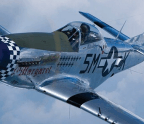
After releasing its full load of 500-pound bombs, Lt. Col. Gerald Wickline’s B-52 aircraft received a hard hit from a Russian surface-to-air missile (SAM) followed by three more explosions. It shattered his windows and reduced his instruments to worthless hardware. The aircraft immediately became almost impossible to control, according to Wickline. Downstairs, the Radar Navigator, Maj. Roger Klingbeil, was at once awash in jet fuel from a transfer valve that had burst overhead. He was screaming with pain. And the navigator, Capt. Myles McTernan, received some of that fuel spill as it dumped on him and flooded the lower deck. Even worse, a spark from any of the 25-year-old B-52 equipment, switches, instruments, radar scopes, or multitude of electrical connections could cause a blast that would destroy the plane and crew.
“I DON’T REMEMBER ANYTHING FROM THE TIME I JUMPED… WHEN IT WAS DARK, UNTIL I FOUND MYSELF FLOATING IN THE WATER… ALONE WITH MY PARACHUTE STRETCHED




